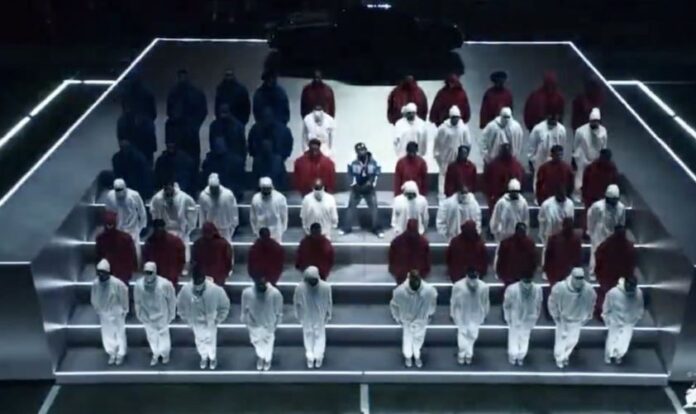
When Kendrick Lamar was announced as the halftime performer for Super Bowl LIX back in September, skepticism from both fans and critics was palpable. Critics argued that Lamar, with his dense lyrics and political undertones, might not resonate on pop music’s grandest stage, often reserved for more mainstream icons. Fans, on the other hand, feared a dilution of his profound artistry for commercial appeal.
However, Lamar proved his critics wrong with a halftime show that was unlike any before. Known for his ability to weave complex narratives with mass appeal, Lamar’s performance was a masterclass in balancing artistic integrity with spectacle.
The show began with an unexpected guest, Samuel L. Jackson, in an Uncle Sam costume, setting the stage for cultural commentary. Lamar, instead of playing into the expected, chose to perform lesser-known tracks from his latest album, GNX, showcasing his roots and authenticity over commercial hits. His choice of songs like “Squabble Up” and “Peekaboo” risked alienating a broad audience, but his use of an extensive dance troupe painted a vivid picture of American culture and struggle.
The performance was not without its moments of direct confrontation, particularly with his feud with Drake. Lamar’s performance of “Not Like Us,” despite legal threats, was a highlight, turning the Superdome into a battleground of lyrical prowess. The song, which had already won Lamar multiple Grammy awards, was performed with a new, pointed introduction, nodding to themes of justice and influence.
Adding to the spectacle, Lamar orchestrated viral moments tailored for social media impact. His direct address to the camera, challenging Drake, and the surprise appearance of Serena Williams, who crip-walked to the beat, were moments that transcended the stadium, capturing the digital world’s attention.
Closing with “TV Off,” Lamar left the audience with a call to action, urging not just to consume but to engage and influence culture actively. His performance was a bold statement on the halftime show format, suggesting that entertainment and social commentary can coexist powerfully.
Lamar’s Super Bowl halftime was not just a show but a narrative, a critique, and a celebration of his art, challenging the norms of what a Super Bowl performance should be. In doing so, he reaffirmed his status not just as a musical artist but as a cultural commentator, leaving fans, critics, and the casual viewer with much to ponder long after the lights dimmed in New Orleans.
Key Points:
Announcement and Skepticism: When Kendrick Lamar was announced as the halftime show performer, there was doubt from both critics, who felt he was too political and complex for the mainstream audience, and fans, who worried about him compromising his artistic integrity.
Balancing Act: Lamar’s strength lies in navigating the tension between artistic expression and broad appeal, which he demonstrated during the performance by choosing less commercial tracks from his album GNX.
Cultural Commentary: The show started with Samuel L. Jackson in an Uncle Sam costume, setting a tone of cultural critique. Lamar’s performance mixed narrative, visual storytelling, and political commentary.
Feud with Drake: Lamar directly addressed his feud with Drake by performing “Not Like Us,” despite legal risks, and used the moment to engage in sharp lyrical confrontation.
Viral Moments: Lamar created moments designed for social media impact, including direct camera engagement and surprise appearances like Serena Williams, enhancing the show’s reach beyond the stadium.
Artistic Integrity: By not leaning on more popular collaborations, Lamar showcased his roots and maintained his artistic voice, using dance and stagecraft to bridge any gaps with the audience.
Closing Message: Ending with “TV Off,” Lamar encouraged an active role in culture rather than passive consumption, making a statement on the role of art in society.
Innovation in Format: Lamar’s approach to the halftime show was a departure from tradition, suggesting new possibilities for what the performance could represent culturally and politically.



